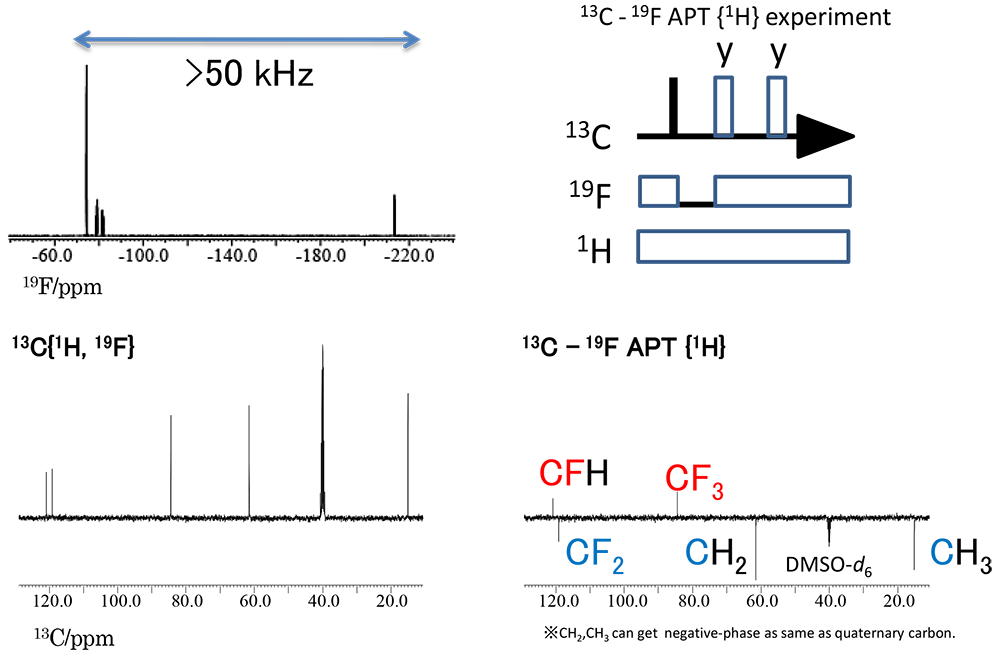Determine number of fluorines attached to each carbon by 13C NMR spectroscopy!
NM170020
The number of fluorine attached to each carbon is useful in structure analysis of fluorinated compounds. 19F signals are sometimes observed in a very wide chemical shift range. In that case, It is difficult to uniformly excite all 19F signals, and hence APT(Attached Proton Test) experiment is more useful than DEPT.
On the other hand, APT is less sensitive than DEPT, so we need to set a higher number of scans. The figures below show 19F, 13C and APT spectra of 5% ethyl 1,1,2,3,3,3-hexafluoropropyl ether in DMSO-d6 . This sample has 19F signals spread over a frequency range of over 50 kHz, and so uniform excitation is very challenging.
- In the 13C-19F APT spectra, 13C signals of CF3 and CF have positive signals, while CF2, C and solvent signals have negative signals.
- By the application of 1H decoupling, we can increase sensitivity!
- ROYALPROBE HFX can perform these 1H, 19F, 13C triple-resonance measurements even with a standard 2-channel console!

13C {1H, 19F} and 13C-19F APT {1H} spectra, 32 scans
- Please see the PDF file for the additional information.
Another window opens when you click. 
PDF 748KB
SEARCH APPLICATIONS
Related Products
Solutions by field
Are you a medical professional or personnel engaged in medical care?
No
Please be reminded that these pages are not intended to provide the general public with information about the products.
